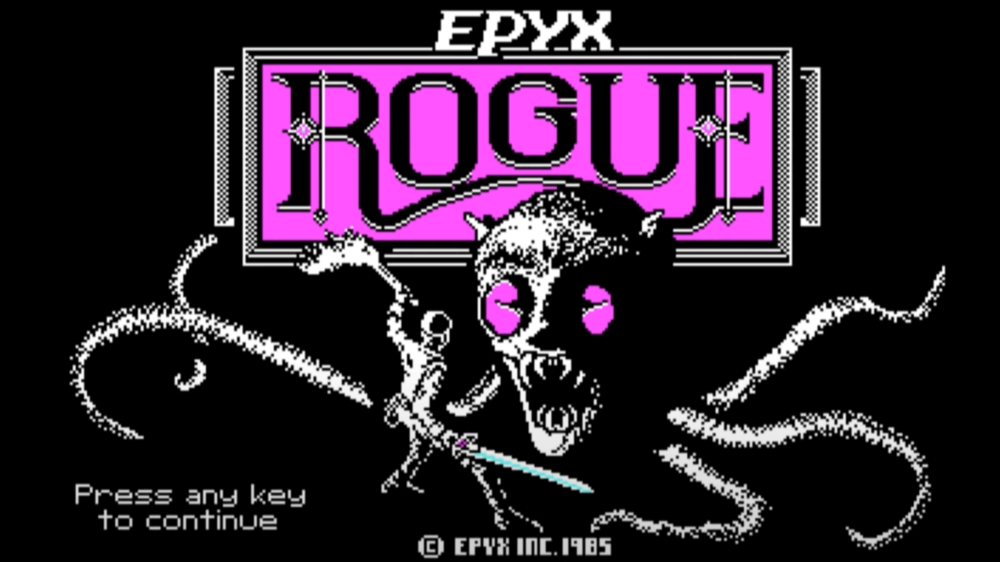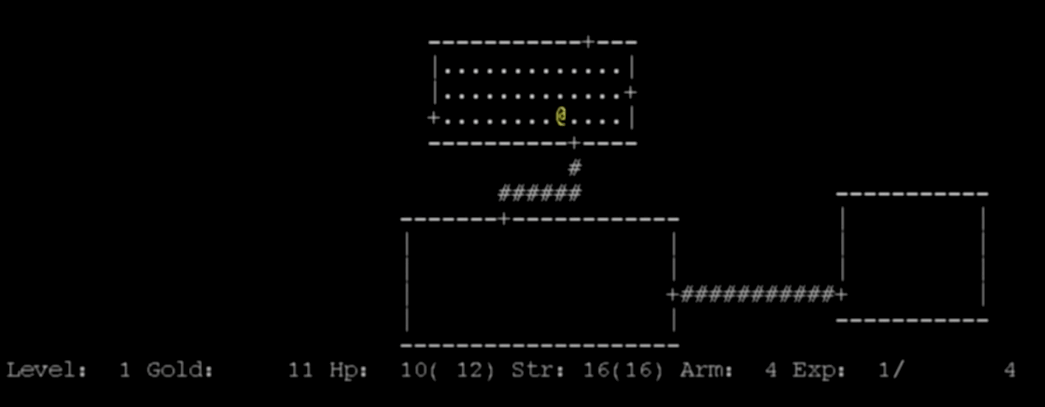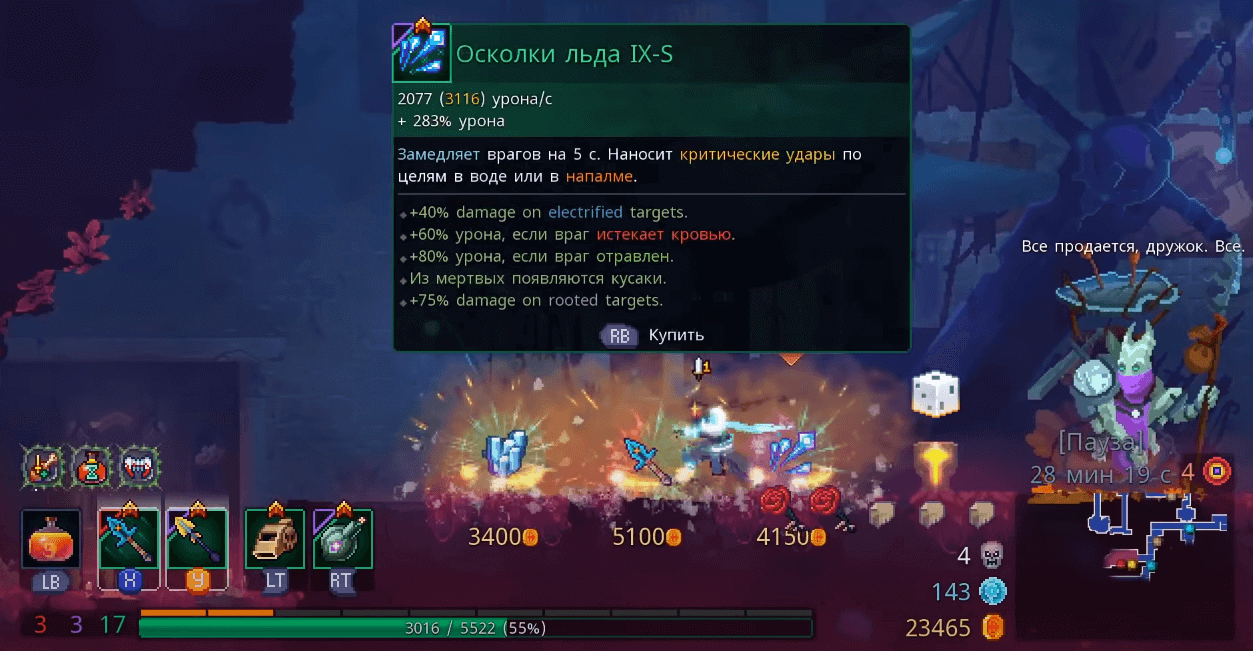Let's talk about Roguelike...

Roguelike - So much hype around the oldest genre...
In 1980, a programming student dreamed of making games. This student was a fan of the Star Trek series and board games. In the beginning, he had no idea that he would become the progenitor of the longest-running genre in video game history, gain limited popularity, but be left with nothing. The student's name was Michael Toy, but it's not a household name these days...
What is the Berlin Interpretation
The Berlin Interpretation is a summary of the prerequisites by which any of the games can be classified as Roguelike or Roguelite. Back in 2008, a group of developers gathered in Berlin for the seasonal International Roguelike Development Conference. The subject of their discussion was the phenomenon of the replayability of the new gameplay formula. The pioneer of the new trend was the ancient game Rogue, released back in 1980.

Roguelike, along with platformers, is the oldest genre of video games. But in its early days, it was popular only among a small circle of hardcore players and students. Roguelike eighties were much harder than today. Only a die-hard RPG fan and a tamer of eight-button wired gamepads could pass this game.
Why was it so hard to play? Roguelike at the time was not at all what we were used to. All those objects and rooms we encounter in rogue-lite games supposedly occur randomly. It took decades for developers to make randomness only lip service. In modern Roguelite, the game helps the player by tossing him the necessary items, but without doing it too explicitly. For example: in the Roguelite game Skul:The Hero Slayer, the player's class depends on the skulls he wears. Skulls can be focused on either physical or magical damage. Also skulls are divided into rarity: normal, rare, unique and legendary. The chance of dropping a unique skull is only 5%. But if you wear the normal Gravedigger skull, the unique Inkseeker skull will fall to you much more often. I've had it fall out four times in a row. The chance of that happening is less than 0.625%. So Random in Roguelite is an illusion, created for excitement, a giveaway game, and also to simulate that the player got a much better game, when in fact he just got lucky - the game let him win.
But why all this naming controversy: Roguelike and Roguelite? Is there a difference between them?
Постулаты Берлинской интерпретации. Roguelike и Roguelite - в чем разница?
The Berlin interpretation implies seven prerequisites:
Permanent death of a character - After the death of a character, the game ends. Roguelike can either be completed in one attempt, or not at all. There are no saves or checkpoints. P.S. There is a popular misconception that permanent death makes any game Roguelike, but this is not true. Some people are firmly convinced that the first Diablo was a roguelike, because in the game it was possible to make a character mortal. Well, Diablo is not a roguelike.
Turn-based - The game should be strictly turn-based: one action, one turn.
Random level generation - The game must reassemble the levels each time you try to play it again. Levels are generated from individual elements. For example: in platformers different platforms are arranged, in card games different cards fall into the player's hands each time, in shooters - different weapons and armor fall out in different parts of the level.
Everything is available at once - All items are available to the player at once and are dropped in random order. No indirect character pumping, just pumping the player's knowledge of the game.
Rules apply to everyone - All game effects apply to the player as well as to virtual opponents. If the protagonist is thirsty, the same need must apply to the mobs. If the protagonist can poison an opponent, the protagonist must also be susceptible to poison.
Only Hack-and-Slash - the original Roguelike can only be Hack-and-Slash. The most famous example of the Hack-and-Slash genre is the Diablo game series. But Diablo is not Roguelike!
Random Objects - As the game progresses, the player collects mysterious objects. This can be a vial with a question mark in the description, the contents of which can be found out only after the protagonist drains it. The vial may contain a healing elixir or rat poison...
Modern Roguelike does not rob the player of all progress after a character is killed, but makes it easier to try again through meta-progression. Meta-progression is the player's profile, not the character's. There are two types of meta-progression: in one case, the player spends currency on primary character bonuses, and in the other, the player spends currency to unlock in-game items that may come to him in the next races. The first approach is considered bad form. If the developer gives the player the opportunity to enhance the protagonist immediately, it means that the developer intentionally lowered the starting characteristics of the protagonist to unplayable, so that the player spent more time in the game. The second approach requires a lot more effort from the developer. If meta-progression is limited to unlocking items, the developer must make sure that the player learns about the strongest items only after hours spent in the game. In addition, there is a nuance: there should not be situations where the player unlocks such a powerful item that the other items become of no interest to him. Balancing unlocking is a titanic effort that takes years of grinding, trial and error. Even Dead Cells sins with imbalances in items, and this game can rightfully be called, if not the best, then one of the best roguelites ever.
The second thing that modern Roguelike rarely matches the Berlin interpretation is the turn-based gameplay and the tie-in to the Hack-and-Slash genre. Modern Roguelike can be a dynamic first-person action game (Deathloop), an urban strategy game (Against the Storm), an old-school shooter (Nightmare Reaper), and sometimes there are 3-in-1 variants - the unusual roguelike Loop Hero. All those Roguelike, which have some kind of simplification for the player, there is a mix of genres and mechanics, are called RogueLITE or simplified roguelike.

Then if Roguelite is the next branch of the evolution of the forty-year-old inhumane to the player of Roguelike.
Pressing buttons and wiggling your brain
In addition to the simplifications, Roguelite also has a major feature: builds based on synergies. In classic Roguelike, the progression was mostly limited to the linear accumulation of numbers, whereas in quality Roguelite, the main emphasis is on combinations. For example, two identical swords have the same damage, but one is garbage and the other is a welcome rarity. Why? Because one of them has "+80% stunned enemies", and the player's build is designed for stuns. The second sword has "+15% damage," but "15" is less than "80"; therefore, a sword with "+15% damage" is garbage.
In Roguelite games, the player is not only motivated to think creatively, but also punished for being narrow-minded. Here's an example: Let's say the player is presented with a choice between three things. The first gives a boost to magic damage, the second gives +50% to physical damage, and the third splits a crossbow bolt into three bolts, but reduces the direct damage of one projectile by 10%. Let's say at that moment the player just started the race, so it is not difficult for him to change weapons, but he sees the cherished "+50%" and chooses the second item...such players usually do not reach the finals.

The thoughtful player will forget about the original plan to build through melee weapons, take the third item with the split crossbow bolt, and probably show better results. Truly in-depth builds are rare, even in modern roguelites. At a glance, I can only think of Dead Cells and Loop Hero. Well-designed builds create excitement in the game. If before the loss prepared only about the sluggishness of the player, then with branched build, the loss spoke about the lack of knowledge or lack of ingenuity.
